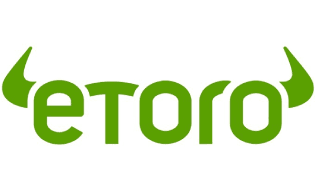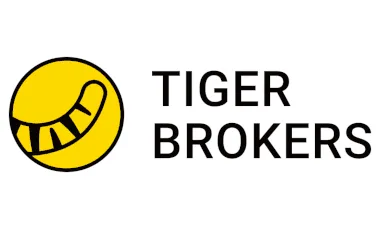Our top pick for
24/5 trading

Walmart Inc is a discount stores business with stocks listed in the US. Walmart shares (WMT) are listed on the NYSE and all prices are listed in US Dollars. Its last market close was US$85.15 – a decrease of 2.67% over the previous week. Here's how to invest if you're based in Australia.
Our top pick for
24/5 trading

Our top pick for
Copy trading

Our top pick for
Mobile app

Walmart's shares were split on a 3:1 basis on 25 February 2024. So if you had owned 1 share the day before the split, the next day you would own 3 shares. This wouldn't directly have changed the overall worth of your Walmart shares – just the quantity. However, indirectly, the new 66.7% lower share price could have impacted the market appetite for Walmart shares which in turn could have impacted Walmart's share price.
| 52-week range | US$57.9044 - US$105.0116 |
|---|---|
| 50-day moving average | US$94.5104 |
| 200-day moving average | US$83.2722 |
| Target price | US$108.3933 |
| PE ratio | 35.5311 |
| Dividend yield | US$0.83 (1.1%) |
| Earnings per share (TTM) | US$2.41 |
Use the fields above to explore the returns from a historical investment. Please refer to the charts further up this page to see performance over 5 years, or other periods. Past performance doesn't indicate future results. Capital is at risk.
Historical closes compared with the last close of $85.15
| 1 week (2025-03-24) | -2.67% |
|---|---|
| 1 month (2025-03-03) | -12.75% |
| 3 months (2024-12-31) | -5.76% |
| 6 months (2024-10-01) | 4.77% |
| 1 year (2024-03-28) | 41.52% |
|---|---|
| 2 years (2023-03-31) | 73.25% |
| 3 years (2022-03-31) | 71.54% |
| 5 years (2020-03-31) | 124.83% |
We currently don't have that product, but here are others to consider:
How we picked theseThe technical analysis gauge below displays real-time ratings for the timeframes you select. However, this is not a recommendation. It represents a technical analysis based on the most popular technical indicators: Moving Averages, Oscillators and Pivots. Finder might not concur and takes no responsibility.
Valuing Walmart stock is incredibly difficult, and any metric has to be viewed as part of a bigger picture of Walmart's overall performance. However, analysts commonly use some key metrics to help gauge the value of a stock.
Walmart's current share price divided by its per-share earnings (EPS) over a 12-month period gives a "trailing price/earnings ratio" of roughly 36x. In other words, Walmart shares trade at around 36x recent earnings.
That's relatively high compared to, say, the trailing 12-month P/E ratio for the NASDAQ 100 at the end of 2019 (27.29). The high P/E ratio could mean that investors are optimistic about the outlook for the shares or simply that they're over-valued.
Walmart's "price/earnings-to-growth ratio" can be calculated by dividing its P/E ratio by its growth – to give 3.3859. A low ratio can be interpreted as meaning the shares offer better value, while a higher ratio can be interpreted as meaning the shares offer worse value.
The PEG ratio provides a broader view than just the P/E ratio, as it gives more insight into Walmart's future profitability. By accounting for growth, it could also help you if you're comparing the share prices of multiple high-growth companies.
Walmart's EBITDA (earnings before interest, taxes, depreciation and amortisation) is US$42.3 billion (£33.4 billion).
The EBITDA is a measure of a Walmart's overall financial performance and is widely used to measure stock profitability.
Over the last 12 months, Walmart's shares have ranged in value from as little as US$57.9044 up to US$105.0116. A popular way to gauge a stock's volatility is its "beta".
Beta measures a share's volatility in relation to the market. The market (NYSE average) beta is 1, while Walmart's is 0.537. This would suggest that Walmart's shares are less volatile than average (for this exchange).
| Revenue TTM | US$681 billion |
|---|---|
| Operating margin TTM | 4.19% |
| Gross profit TTM | US$169.2 billion |
| Return on assets TTM | 7.15% |
| Return on equity TTM | 21.41% |
| Profit margin | 2.85% |
| Book value | 11.343 |
| Market capitalisation | US$686.5 billion |
| EBITDA | US$42.3 billion |
TTM: trailing 12 months
Dividend payout ratio: 34.22% of net profits
Recently Walmart has paid out, on average, around 34.22% of net profits as dividends. That has enabled analysts to estimate a "forward annual dividend yield" of 1.1% of the current stock value. This means that over a year, based on recent payouts (which are sadly no guarantee of future payouts), Walmart shareholders could enjoy a 1.1% return on their shares, in the form of dividend payments. In Walmart's case, that would currently equate to about $0.83 per share.
While Walmart's payout ratio might seem fairly standard, it's worth remembering that Walmart may be investing much of the rest of its net profits in future growth.
Walmart's most recent dividend payout was on 4 January 2026. The latest dividend was paid out to all shareholders who bought their shares by 8 May 2025 (the "ex-dividend date").
Environmental, social and governance (known as ESG) criteria are a set of three factors used to measure the sustainability and social impact of companies like Walmart.
When it comes to ESG scores, lower is better, and lower scores are generally associated with lower risk for would-be investors.
Total ESG risk: 33.72
Socially conscious investors use ESG scores to screen how an investment aligns with their worldview, and Walmart's overall score of 33.72 (as at 12/31/2018) is nothing to write home about – landing it in it in the 55th percentile of companies rated in the same sector.
ESG scores are increasingly used to estimate the level of risk a company like Walmart is exposed to within the areas of "environmental" (carbon footprint, resource use etc.), "social" (health and safety, human rights etc.), and "governance" (anti-corruption, tax transparency etc.).
Environmental score: 6.47/100
Walmart's environmental score of 6.47 puts it squarely in the 6th percentile of companies rated in the same sector. This could suggest that Walmart is a leader in its sector terms of its environmental impact, and exposed to a lower level of risk.
Social score: 20.6/100
Walmart's social score of 20.6 puts it squarely in the 6th percentile of companies rated in the same sector. This could suggest that Walmart is a leader in its sector when it comes to taking good care of its workforce and the communities it impacts.
Governance score: 11.14/100
Walmart's governance score puts it squarely in the 6th percentile of companies rated in the same sector. That could suggest that Walmart is a leader in its sector when it comes to responsible management and strategy, and exposed to a lower level of risk.
Controversy score: 4/5
ESG scores also evaluate any incidences of controversy that a company has been involved in. Walmart scored a 4 out of 5 for controversy – the second-lowest score possible, reflecting that Walmart has a damaged public profile.
Walmart Inc was last rated for ESG on: 2019-01-01.
| Total ESG score | 33.72 |
|---|---|
| Total ESG percentile | 55.48 |
| Environmental score | 6.47 |
| Environmental score percentile | 6 |
| Social score | 20.6 |
| Social score percentile | 6 |
| Governance score | 11.14 |
| Governance score percentile | 6 |
| Level of controversy | 4 |
Walmart Inc. engages in the operation of retail and wholesale stores and clubs, eCommerce websites, and mobile applications worldwide. The company operates through three segments: Walmart U.S., Walmart International, and Sam's Club. It operates supercenters, supermarkets, warehouse clubs, cash and carry stores, and discount stores under Walmart and Walmart Neighborhood Market brands; membership-only warehouse clubs; and ecommerce websites, such as walmart.com.mx, walmart.ca, flipkart.com, PhonePe and other sites. The company also offers grocery items, including dry grocery, snacks, dairy, meat, produce, deli and bakery, frozen foods, alcoholic and nonalcoholic beverages, as well as consumables, such as health and beauty aids, pet supplies, household chemicals, paper goods, and baby products; and fuel and other categories. In addition, it is involved in the provision of health and wellness products covering pharmacy, optical and hearing services, over-the-counter drugs, and protein and nutrition products; and home, hardlines, and seasonal items, including home improvement, outdoor living, gardening, furniture, apparel, jewelry, tools and power equipment, housewares, toys, and mattresses. Further, the company offers consumer electronics and accessories, software, video games, office supplies, appliances, and third-party gift cards. Additionally, it operates digital payment platforms; offers financial services and related products, including money transfers, bill payments, money orders, check cashing, prepaid access, co-branded credit cards, installment lending, and earned wage access; and markets lines of merchandise under private and licensed brands. The company was formerly known as Wal-Mart Stores, Inc. and changed its name to Walmart Inc. in February 2018. Walmart Inc. was founded in 1945 and is based in Bentonville, Arkansas.
It's easier than ever to buy US and other global OTC stocks from Australia.
How to buy Fannie Mae (FNMA) shares in Australia.
How to buy the OTC stock made famous during the GFC from Australia.
We've compared the fees and features of 40 trading platforms to find the best picks for options traders in Australia.
We used Finder's proprietary algorithm to find the 10 best stocks under $10 on the ASX.
We used Finder's proprietary algorithm to find Australian-listed companies that have strong fundamentals and have a share price under $5.
Best performers included African Gold, Leeuwin Metals and European Metals Holdings.
Top gainers included Gold Road Resources, Black Cat Syndicate and Ramelius Resources.
Here is the essential information you need to know about buying shares for children.
Learn more about micro-investing and how it works.